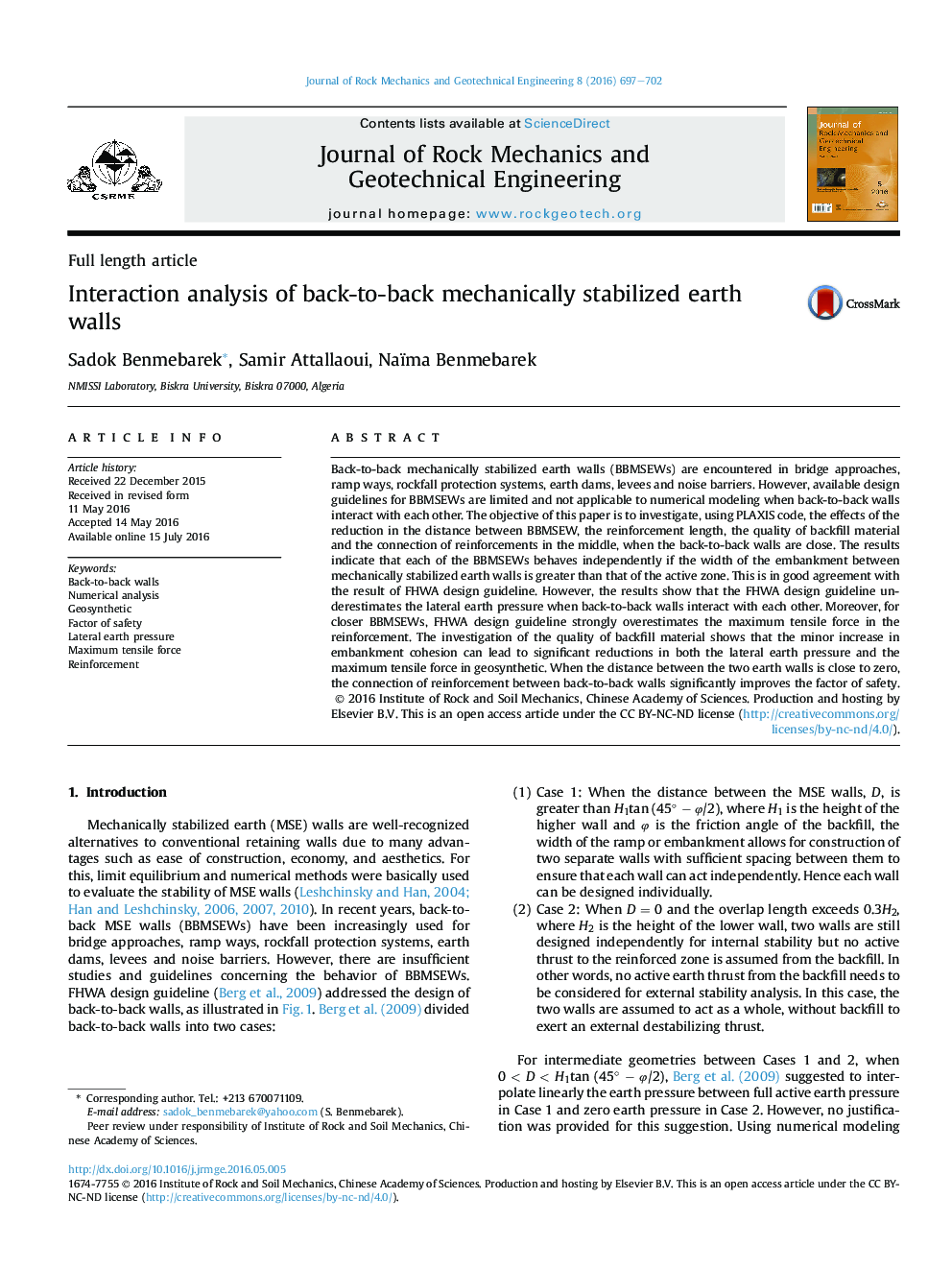| Article ID | Journal | Published Year | Pages | File Type |
|---|---|---|---|---|
| 4923711 | Journal of Rock Mechanics and Geotechnical Engineering | 2016 | 6 Pages |
Back-to-back mechanically stabilized earth walls (BBMSEWs) are encountered in bridge approaches, ramp ways, rockfall protection systems, earth dams, levees and noise barriers. However, available design guidelines for BBMSEWs are limited and not applicable to numerical modeling when back-to-back walls interact with each other. The objective of this paper is to investigate, using PLAXIS code, the effects of the reduction in the distance between BBMSEW, the reinforcement length, the quality of backfill material and the connection of reinforcements in the middle, when the back-to-back walls are close. The results indicate that each of the BBMSEWs behaves independently if the width of the embankment between mechanically stabilized earth walls is greater than that of the active zone. This is in good agreement with the result of FHWA design guideline. However, the results show that the FHWA design guideline underestimates the lateral earth pressure when back-to-back walls interact with each other. Moreover, for closer BBMSEWs, FHWA design guideline strongly overestimates the maximum tensile force in the reinforcement. The investigation of the quality of backfill material shows that the minor increase in embankment cohesion can lead to significant reductions in both the lateral earth pressure and the maximum tensile force in geosynthetic. When the distance between the two earth walls is close to zero, the connection of reinforcement between back-to-back walls significantly improves the factor of safety.
